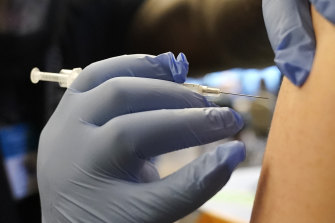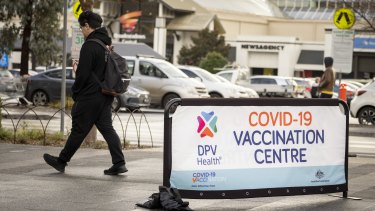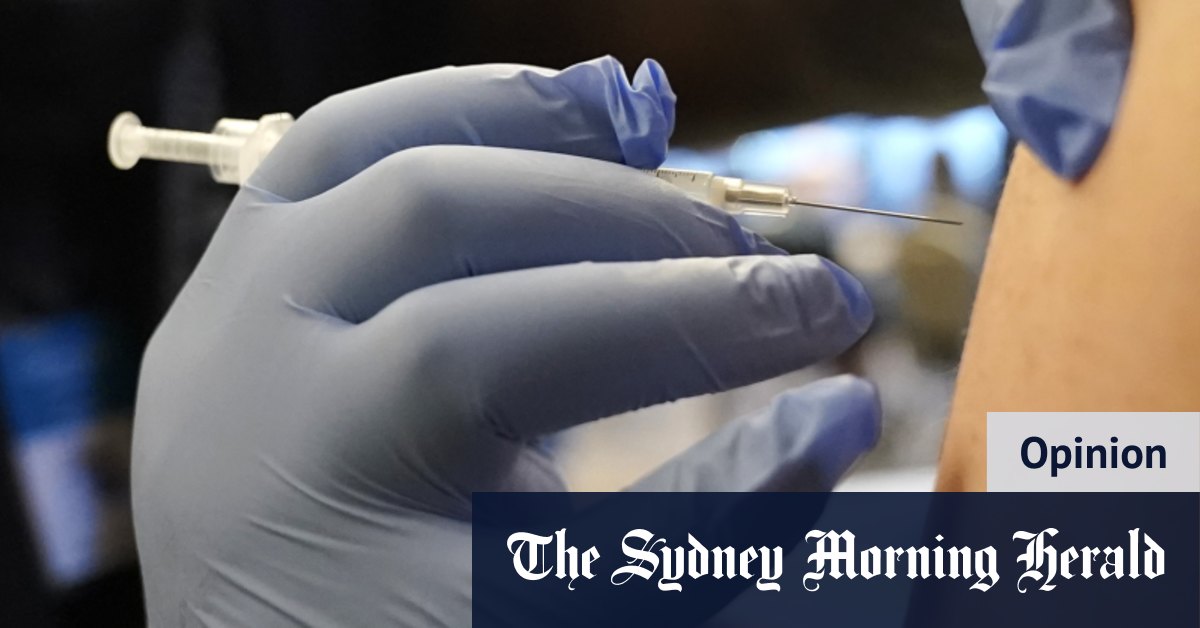So much of the heat over how we manage the current COVID-19 wave is about mandatory masks, yet Australia has dropped the ball where it matters most right now – booster vaccination.
Australia led the world in two-dose uptake, reaching 96 per cent of people aged over 16 years. But we have stalled on boosters, where rates have sat about 70 per cent for weeks. For NDIS participants, 76 per cent have had a booster; for First Nations people, it’s just 54 per cent.

The number of Australians receiving booster shots has stalled. Credit:AP
We need to focus our attention on boosters. They sit at the top of a limited set of COVID-19 management tools. A booster markedly reduces a person’s risk of severe disease if they have it three months after a previous vaccine or infection. A study of more than 2 million Sydney residents during the first Omicron wave estimated that one hospitalization or death was prevented for every 192 people aged over 70 getting a third dose. In an Israeli study, a fourth dose lowered the rate of severe disease by a factor of three.
Your postcode should not determine your likelihood of having a vaccine that could greatly reduce your risk of hospitalization from COVID. Yet, that is what is occurring. Some of this will be explained by people’s recent infections delaying their booster. But the huge differences in geographic vaccination rates tell a familiar story of inequity.
Local council areas of Queensland and western Sydney dominate the lowest-ranked booster rates. Just 49 per cent of people in Queensland’s Central Highlands have had three or more doses. In Cumberland, western Sydney – which includes Greystanes, Merrylands, Guildford, Granville and Auburn – it’s 55 per cent. Contrast that with wealthy Mosman in Sydney at 83 per cent. This drops even more for First Nations individuals – in one very remote community in Queensland, only 31 per cent are boosted.

The take-up of booster vaccinations has been poorest in areas that most need the protection.Credit:Wayne Taylor
It is easy to get outraged about so-called “anti-vaxxer” hotspots when such areas have the lowest vaccination rates. But we need to pay attention to the areas where people face disadvantage, and not with outrage or stigmatisation, but with listening and constructive solutions.
As a resident of western Sydney for two decades, I know there are many communities with different reasons for not vaccinating.
Social research, backed up by conversations I’ve had with people in my local community, reveals an information gap on vaccination. There is a lack of clear, translated, actionable information about why boosters are needed now. We learn how misinformation fills voids created when accurate information flows too slowly. We learn of the challenges in getting transport to the clinic and other practical barriers that remain for some.
